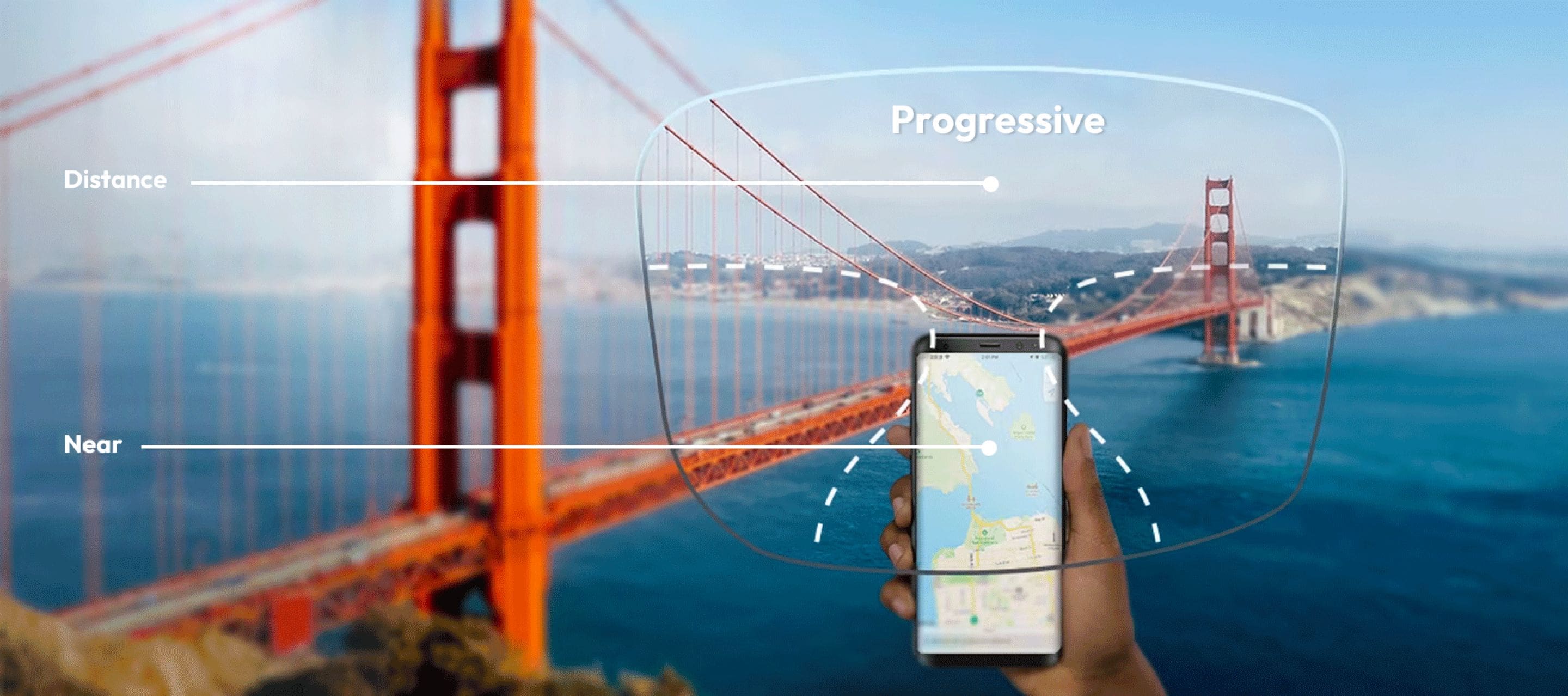Progressive lenses are a type of eyeglass lens that corrects vision at near, middle, and far distances. This is all done within a single lens,
without the harsh line that bifocal and trifocal lenses have. Progressives are an excellent solution for people who have both blurry near vision and distant vision.
Say goodbye to switching between reading glasses and distance glasses. With progressive glasses, you can have visual clarity at every
distance, all at the same time. The best part? You can customize your frames with progressive lenses for as low as $70.








